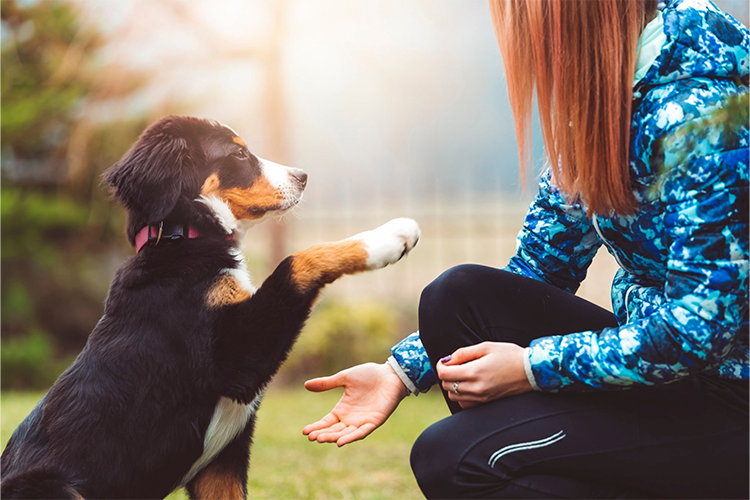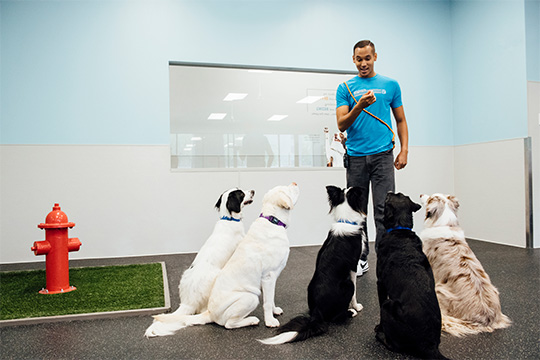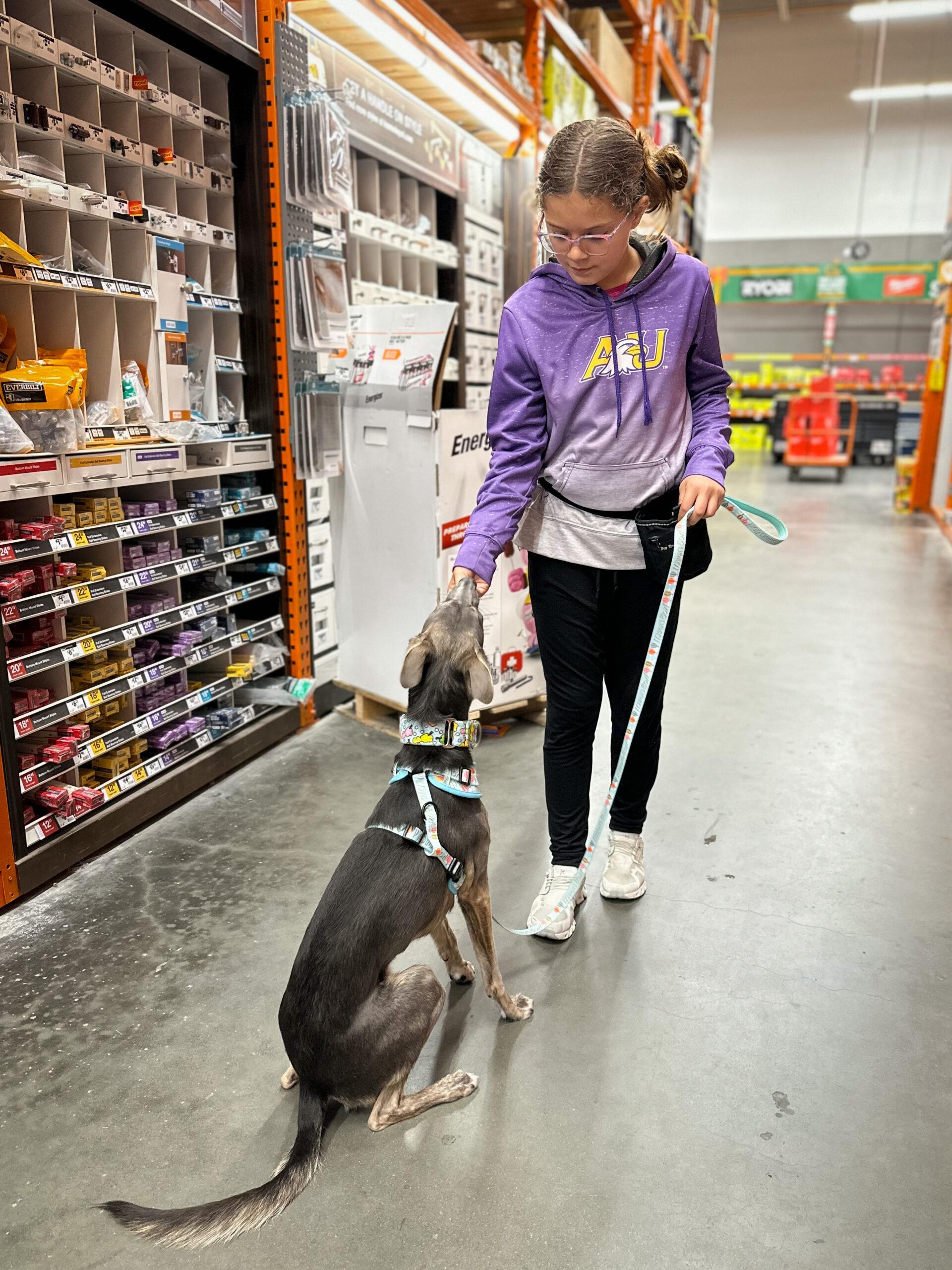Why Consistency is Key in Dog Training for Long-Term Success
Why Consistency is Key in Dog Training for Long-Term Success
Blog Article
Top Pet Educating Techniques Every Proprietor Need To Know

Positive Reinforcement Strategies
Utilizing favorable reinforcement strategies is crucial for effective canine training, as it promotes a relying on bond in between the dog and the trainer. This approach concentrates on gratifying preferable habits instead of punishing undesirable ones, developing an environment helpful to finding out. Benefits can include deals with, appreciation, or play, which motivate dogs to duplicate the actions that earn them these rewards.

Additionally, this strategy boosts the dog's enthusiasm for training sessions. When canines link training with favorable experiences, they are a lot more engaged and receptive. Past prompt therapy, positive reinforcement motivates a joint connection in between the dog and instructor, decreasing stress and anxiety and concern
To take full advantage of performance, it is important to supply benefits immediately, ensuring the dog attaches the actions with the support. Basically, positive support methods not only produce better-trained pets but also promote an unified partnership between pet and proprietor.
Remote Control Training Technique
The clicker training method is a highly efficient method that builds upon the concepts of favorable reinforcement by including an unique noise to mark wanted habits. This technique uses a little handheld gadget that creates a clicking audio, enabling instructors to communicate with their pet dogs in a immediate and clear fashion. When a pet dog carries out a behavior that the owner wishes to encourage, the clicker is triggered, complied with by an incentive, typically in the type of deals with or praise.
The secret to successful remote control training lies in uniformity and timing. It is vital to click at the precise moment the preferred behavior occurs, making sure that the pet dog associates the audio with the action and the subsequent benefit. This method not just boosts interaction however additionally fosters a more powerful bond in between the dog and the owner, as it motivates interaction and communication during training sessions.
Remote control training can be used to a selection of habits and commands, from fundamental obedience to extra intricate tricks. Its flexibility and effectiveness make it a preferred strategy among professional fitness instructors and pet dog proprietors alike, paving the way for a receptive and well-trained canine companion.
Chain Training Fundamentals
Efficient leash training is vital for making sure a secure and enjoyable walking experience for both pet dogs and their owners. A flat collar may work for some pets, while others might profit from a harness that decreases pulling.
Present your dog to the chain slowly, allowing them to discover it in a comfortable setting. Once they are accustomed, practice loose-leash walking. This entails fulfilling your dog for strolling close to you as opposed to drawing ahead. Use treats and praise to strengthen preferred habits, and be certain to stay tranquil and assertive.
If your dog starts to draw, stop walking immediately. Wait until they return to your side before resuming. This teaches them that pulling does not lead to proceed. In addition, technique different walking environments to help your canine adjust to disturbances.
Routine technique will solidify your pet dog's understanding of leash decorum. Keep in mind that chain training is a continuous procedure; persistence and consistency will yield the most effective results, promoting a favorable experience for both you and your canine buddy.
Socialization Techniques
Socializing is a vital facet of pet dog training that should preferably begin throughout puppyhood but can be helpful at any type of age. Efficient socializing helps canines develop confidence and reduces the possibility of behavioral concerns. To implement successful socializing techniques, subject your dog to a selection of environments, people, and other pets.
Beginning with controlled setups, such as puppy classes or arranged playgroups, where young dogs can interact securely. Gradually introduce your dog to brand-new experiences, consisting of various sounds, surface click site areas, and tasks. Ensure these encounters are positive and rewarding to establish a feeling of safety.
For grown-up dogs or those doing not have direct exposure, start click here to find out more with low-stress circumstances. Short, favorable interactions with calm dogs and friendly humans can develop favorable associations. Utilize treats and appreciation to reinforce preferable habits throughout these experiences.

Consistency and Patience
Acknowledging the value of uniformity and persistence in pet training is important for attaining long lasting results. Educating a pet is a gradual procedure that requires a structured approach and unwavering commitment from the proprietor. Each command or behavior have to be reinforced consistently to aid the pet dog comprehend what is expected of them. Inconsistent training can bring about complication, making it difficult for the pet dog to grasp behaviors or commands, ultimately impeding progress.
Additionally, perseverance is an essential element of reliable training. Dogs, like people, find out at their own speed. Some may understand ideas promptly, while others may take longer. It is essential for owners to continue to be encouraging and tranquil, enhancing positive habits without considering aggravation or penalty. This fosters a trusting partnership between the canine and proprietor, urging a more passionate and willing learner.
To grow uniformity and perseverance, develop a routine training regular, make use of the exact same commands, and guarantee that all member of the family use the same training concepts - Dog training. By doing so, you develop a steady setting for finding out, enabling your pet dog to establish and thrive into a well-behaved buddy
Conclusion
To conclude, reliable canine training techniques, such as favorable reinforcement, clicker training, and proper chain training, are essential for promoting a healthy and balanced owner-dog partnership. Furthermore, implementing socialization methods and preserving consistency and patience throughout the training process contributes dramatically to a pet dog's total health. By integrating these methods, dog proprietors can promote the advancement of well-adjusted, loyal family pets, inevitably improving the high quality Home Page of life for both the proprietor and the dog.
Among the most prominent methods are favorable reinforcement, remote control training, and leash training, each offering unique benefits that add to a well-behaved dog. As we explore these fundamental techniques, it becomes apparent that understanding their nuances can dramatically influence the training experience and the pet dog's overall behavior.Making use of favorable reinforcement techniques is vital for efficient pet training, as it cultivates a relying on bond in between the trainer and the pet dog.In verdict, effective canine training strategies, such as favorable reinforcement, clicker training, and proper leash training, are essential for cultivating a healthy and balanced owner-dog relationship. By integrating these techniques, pet proprietors can promote the advancement of well-adjusted, obedient family pets, eventually improving the quality of life for both the owner and the canine.
Report this page